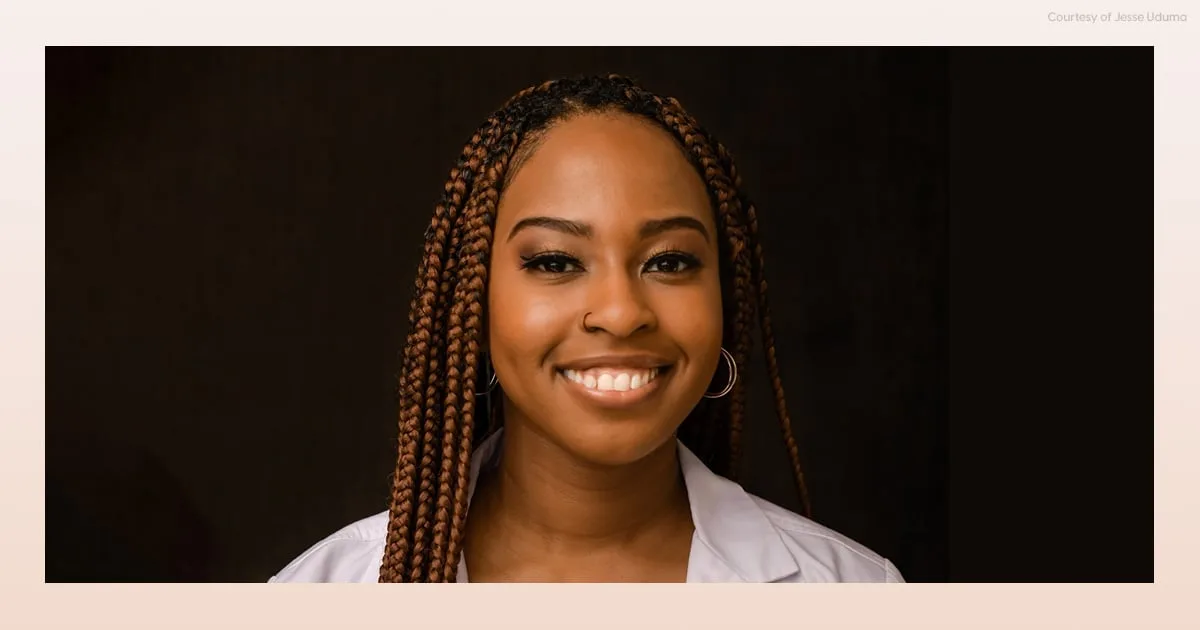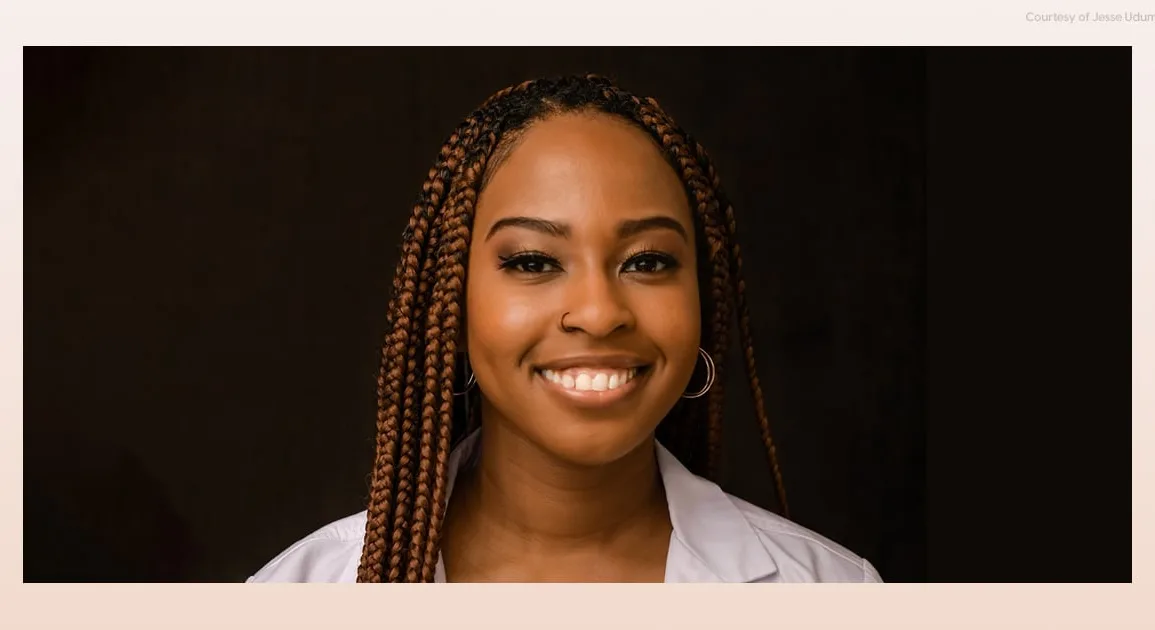
There are so many aspects of health that disproportionately affect the Black community, and yet less than six percent of US doctors are Black — a deficit that only further harms public health. Many of the Black folks who work in healthcare have dedicated their careers to combating inequities. That’s why, this Black History Month, PS is crowning our Black Health Heroes: physicians, sexologists, doulas, and more who are advocating for the Black community in their respective fields. Meet them all here.
Angela Udongwo calls her journey to becoming a Black health hero “serendipity.” If you’ve yet to learn about her work, Udongwo, who is a third-year medical student at Temple University, has been examining how braids, twists, and locs (referred to as BTLs) present in medical imaging. “We’re looking at x-rays for the most part, but also magnetic resonance imaging (MRIs) and computed tomography scans (CTs),” Udongwo tells POPSUGAR. After the scans are taken, Udongwo also looks at how physicians interact with them. “We examine how often they see images with BTLs, how comfortable they are with how the hair presents, as well as how knowledgeable they are with this phenomenon of how hair can present in this imaging,” she explains.
For a bit of background, Udongwo came across this project after working with Hillel Maresky, MD, her research mentor and an assistant radiology professor at Temple. Dr. Maresky wanted to build a knowledge base that works to distinguish protective hairstyles when looking at radiological scans, as he noticed that artifacts, which present as brighter spots or squiggly lines, would show up in quite a few scans for his patients, but he didn’t know what they were. Because there wasn’t a lot of literature about this phenomenon, Maresky’s secretary suggested that what he was seeing may be a traditional Black hairstyle.
“With CT scans, you can reconstruct images and see density-wise, the different types of hair that a patient had on their head, meaning you can essentially see their hairstyles,” Udongwo says. “He ended up having this bank of images that he was going to use just to better his own practice, but when I came to him, he thought I would be interested in the project.”
As Udongwo dug further into the research, she saw that this lack of knowledge had a host of adverse effects. It resulted in imaging results being mistaken for disease; patients being requested to come back in for more imaging, which is highly inconvenient and exposed them to more radiation; and patients having to be seen by multiple radiologists.
“I was shocked that there was really no literature on this issue — save for a single case study from years ago — because there are very few subjects that there is little research on,” Udongwo says. “Additionally, it was interesting to see the recommendations be that people take their hair out, because it doesn’t take into consideration what it takes to get BTLs done or what it takes to take them down.” Once she realized the ramifications of this glaring gap, she decided she would fully commit to the study.
For Udongwo, this work is particularly crucial because she is well aware of how important hair is in the Black community. “Your hair makes up so much of your image,” she says. “For me, I feel like different people when I have my natural hair out versus when I do french curls or knotless braids, and then again when I do blond. So much of your identity can be wrapped up in what you look like and for that to impede someone’s healthcare is astonishing to me.”
Udongwo hopes that this study will offer a baseline piece of literature for people to refer back to when this issue arises in the future. “Just having something out there that normalizes this work can provide comfort to people,” Udongwo says. “With patients, especially now more than ever taking ownership over their healthcare, this work can help both them and their care providers have a foundation to work off. This is the ultimate goal of this study. Better-educated physicians, more informed patients, and another healthcare disparity being appropriately addressed.”


